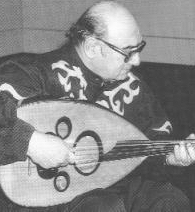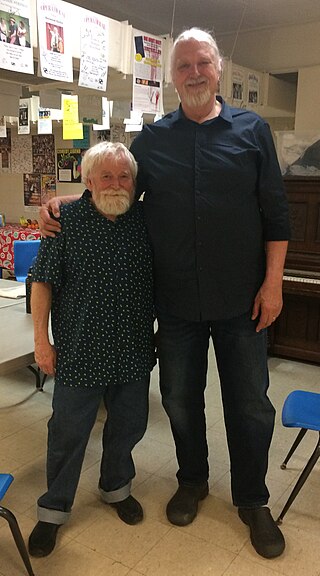The banjo is a stringed instrument with a thin membrane stretched over a frame or cavity to form a resonator. The membrane is typically circular, in modern forms usually made of plastic, originally of animal skin. Early forms of the instrument were fashioned by African Americans and had African antecedents. In the 19th century, interest in the instrument was spread across the United States and United Kingdom by traveling shows of the 19th century minstrel show fad, followed by mass-production and mail-order sales, including instruction method books. The inexpensive or home-made banjo remained part of rural folk culture, but 5-string and 4-string banjos also became popular for home parlor music entertainment, college music clubs, and early 20th century jazz bands. By the early 21st century, the banjo was most frequently associated with folk, bluegrass and country music, but was also used in some rock, pop and even hip-hop music. Among rock bands, the Eagles, Led Zeppelin, and the Grateful Dead have used the five-string banjo in some of their songs. Some famous pickers of the banjo are Ralph Stanley and Earl Scruggs.

William Smith Monroe was an American mandolinist, singer, and songwriter, and created the bluegrass music genre. Because of this, he is often called the "Father of Bluegrass".

Bluegrass music is a genre of American roots music that developed in the 1940s in the Appalachian region of the United States. The genre derives its name from the band Bill Monroe and the Blue Grass Boys. Like mainstream country music, it largely developed out of old-time string music, though in contrast, it is traditionally played exclusively on acoustic instruments and also has roots in traditional English, Scottish and Irish ballads and dance tunes, as well as in blues and jazz. It was further developed by musicians who played with Monroe, including 5-string banjo player Earl Scruggs and guitarist Lester Flatt. Monroe characterized the genre as "Scottish bagpipes and ole-time fiddlin'. It's a part of Methodist, Holiness and Baptist traditions. It's blues and jazz, and it has a high lonesome sound."

Martha Elenor Maguire is an American musician who is a founding member of the country band the Chicks and the country bluegrass duo Court Yard Hounds. She won awards in national fiddle championships while still a teenager. Maguire is accomplished on several other instruments, including the mandolin, viola, double bass and guitar. She has written and co-written a number of the band's songs, some of which have become chart-topping hits. She also contributes her skills in vocal harmony and backing vocals, as well as orchestrating string arrangements for the band.

Albert William Lee is an English guitarist known for his fingerstyle and hybrid picking technique. Lee has worked, both in the studio and on tour, with many famous musicians from a wide range of genres. He has also maintained a solo career and is a noted composer and musical director.

A rhythm section is a group of musicians within a music ensemble or band that provides the underlying rhythm, harmony and pulse of the accompaniment, providing a rhythmic and harmonic reference and "beat" for the rest of the band. The rhythm section is often contrasted with the roles of other musicians in the band, such as the lead guitarist or lead vocals whose primary job is to carry the melody.

Munir Bashir, was an Iraqi Assyrian musician and one of the most famous musicians in the Middle East during the 20th century and was considered to be the supreme master of the Arab maqamat scale system.

Lloyd Allayre Loar (1886–1943) was an American musician, instrument designer and sound engineer. He is best known for his design work with the Gibson Mandolin-Guitar Mfg. Co. Ltd. in the early 20th century, including the F-5 model mandolin and L-5 guitar. In his later years he worked on electric amplification of stringed instruments, and demonstrated them around the country. One example, played in public in 1938 was an electric viola that used electric coils beneath the bridge, with no back, able to "drown out the loudest trumpet."

Country Life is the eleventh studio album by English acoustic roots duo Show of Hands. Released in 2003, it marks a departure for the band, with stronger socially and politically lyrics than the duo's previous albums, as well as showcasing the duo exploring a larger musical palette. Some of the album's lyrics concern rural issues which Knightley had taken to heart in previous years, including in the aftermath of their previous lyrical album Cold Frontier (2001). Prior to the release of Country Life, the duo had released an instrumental album named The Path. Both The Path and Country Life were released close together. The album was packaged in a lavish set which included a bonus disc of demo versions and other bonus material. The album's title track was also promoted by the band's first music video.

Trout Fishing in America is an American musical duo from Houston, Texas. The members are Keith Grimwood and Ezra Idlet. Both musicians were previously members of the folk rock band Wheatfield, also known as St. Elmo's Fire. They took their name from the novel Trout Fishing in America by Richard Brautigan. The duo has released 24 studio albums through their own label, Trout Music. Trout Fishing in America is known for varied musical styles, with albums alternating between folk rock and children's music, as well as the contrast between Grimwood's and Idlet's stage presence. In addition to their music, Trout Fishing in America holds songwriting workshops with children. Four of their albums have been nominated for Grammy Awards.
A string band is an old-time music or jazz ensemble made up mainly or solely of string instruments. String bands were popular in the 1920s and 1930s, and are among the forerunners of modern country music and bluegrass. While being active countrywide, in Philadelphia and its surrounding suburbs they are a huge part of its musical culture and traditions, appearing, among others, in the yearly Mummers Parade.
Americana is an amalgam of American music formed by the confluence of the shared and varied traditions that make up the musical ethos of the United States of America, with particular emphasis on music historically developed in the American South.
Lonzo and Oscar were an American country music duo founded in 1945 originally consisting of Lloyd "Lonzo" George (1924–1991) and Rollin "Oscar" Sullivan (1919–2012), best known for being the first to perform the 1948 song "I'm My Own Grandpa". George departed in 1950, and Lonzo was later portrayed by Johnny Sullivan (1917–1967) from 1950 to 1967 and by David Hooten from 1967 to 1985, when the band retired. Lonzo and Oscar owned a record label, a recording studio, and a music publishing company. The recording studio and the record label were called "Nugget". The music publishing company was called "Lonzo and Oscar (BMI)". Melba Montgomery's first recordings were released on Nugget Records in the late 1950s through the early 1960s. The songs which Starday Records released by Melba Montgomery in the 1960s came from Nugget Records. Harlan Howard recorded an album with Nugget Records. Danny Harrison, Melba Montgomery, and Darnell Miller wrote for Lonzo and Oscar's publishing company, Lonzo and Oscar (BMI).

Jim & Jesse were an American bluegrass music duo of brothers, Jim McReynolds and Jesse McReynolds. They were born and raised in Carfax, a community near Coeburn, Virginia, United States.
Vern Williams was a singer and mandolin player who was instrumental in introducing bluegrass music to the West Coast of the United States.

Gary Ruley and Mule Train is an acoustic bluegrass band based in Lexington, Virginia who also play New Grass and Jazz music.
Evan Marshall is a virtuoso mandolinist, prominent as an arranger of classical music pieces for the mandolin and proponent of the duo style of playing. His name comes up in mandolin-oriented music circles as one of the best of modern mandolin players, one who has taken the techniques of early mandolin soloists to new levels. He is also a recording artist with Rounder Records and teaches mandolin. He has given classes for the Classical Mandolin Society of America, the Mandolin Symposium and the American Mandolin and Guitar Summer School, and has been associated with the Conservatory of Music at Biola University. As a performer, he has worked as a featured guest with several symphony orchestras, including the Houston Symphony, Phoenix Symphony, and Buffalo Philharmonic Orchestra. He is a former member of Billy Hill and the Hillbillies.

The mandolin has had a place in North American culture since the 1880s, when a "mandolin craze" began. The continent was a land of immigrants, including Italian immigrants, some of whom brought their mandolins with them. In spite of the mandolin having arrived in America, it was not in the cultural consciousness until after 1880 when the Spanish Students arrived on their international performing tour. Afterwards, a "mandolin craze" swept the United States, with large numbers of young people taking up the instrument and teachers such as Samuel Siegel touring the United States. The fad died out after World War I, but enough had learned the instrument that it remained. The mandolin found a new surge with the music of Bill Monroe; the Gibson F-5 mandolin he played, as well as other archtop instruments, became the American standard for mandolins. Bowlback mandolins were displaced. The instrument has been taken up in blues, bluegrass, jug-band music, country, rock, punk and other genres of music. While not as popular as the guitar, it is widespread across the country.

Following its invention and development in Italy the mandolin spread throughout the European continent. The instrument was primarily used in a classical tradition with mandolin orchestras, so called Estudiantinas or in Germany Zupforchestern, appearing in many cities. Following this continental popularity of the mandolin family, local traditions appeared outside Europe in the Americas and in Japan. Travelling mandolin virtuosi like Carlo Curti, Giuseppe Pettine, Raffaele Calace and Silvio Ranieri contributed to the mandolin becoming a "fad" instrument in the early 20th century. This "mandolin craze" was fading by the 1930s, but just as this practice was falling into disuse, the mandolin found a new niche in American country, old-time music, bluegrass and folk music. More recently, the Baroque and Classical mandolin repertory and styles have benefited from the raised awareness of and interest in Early music.













